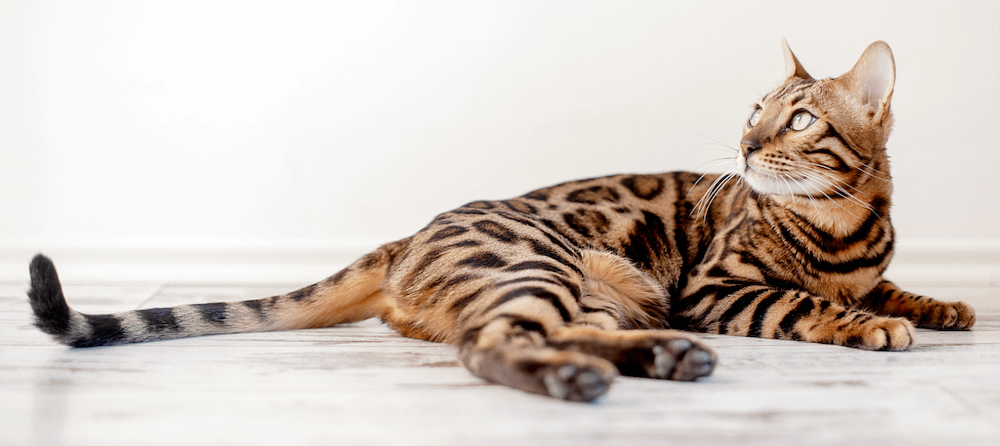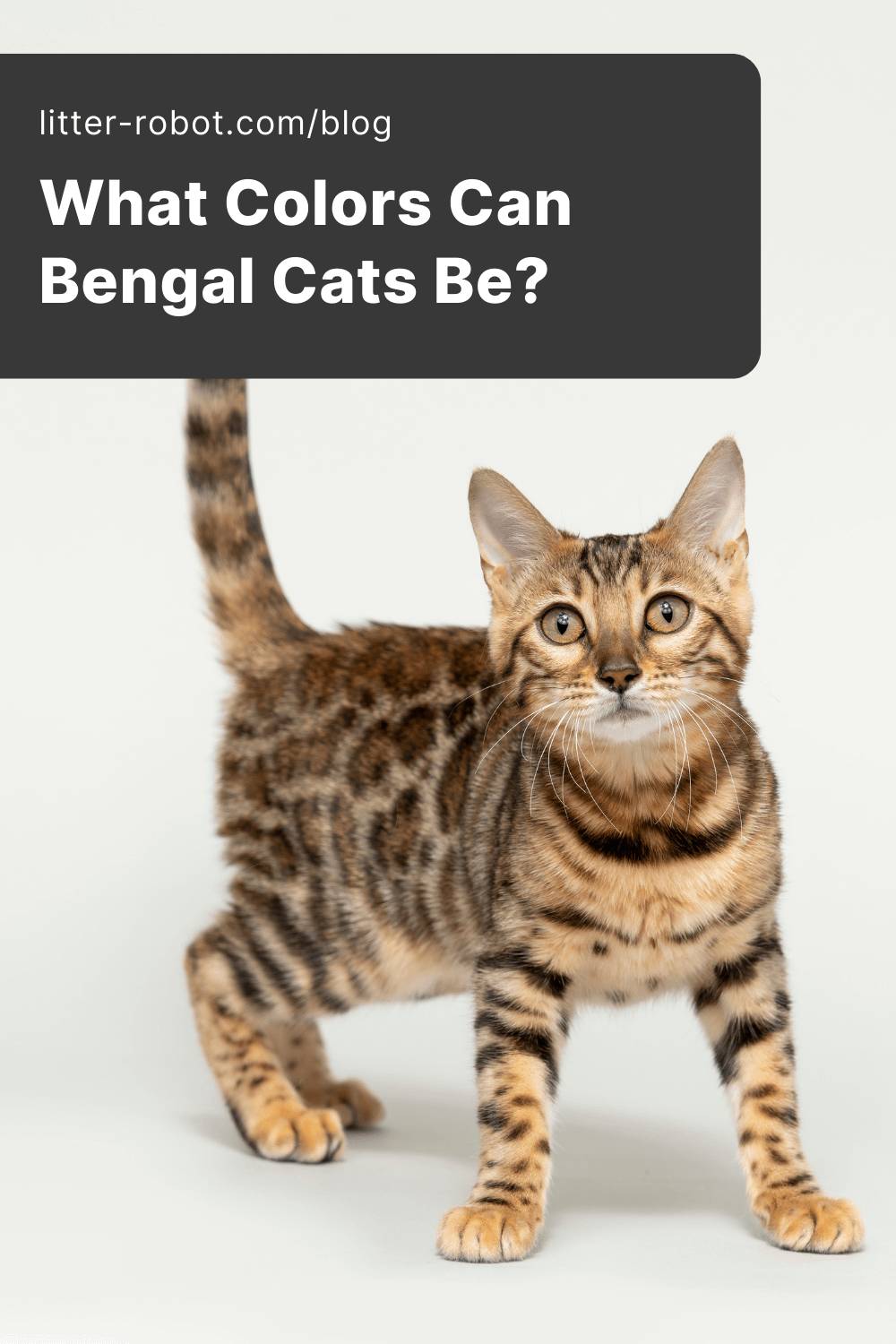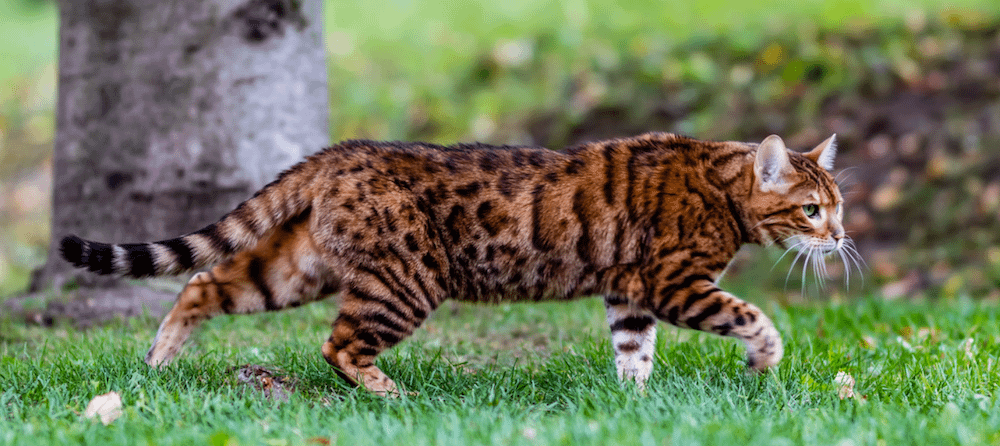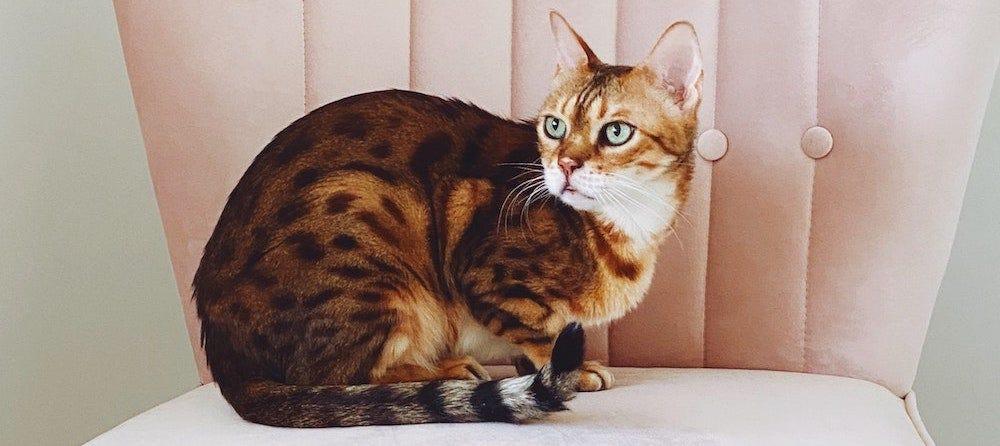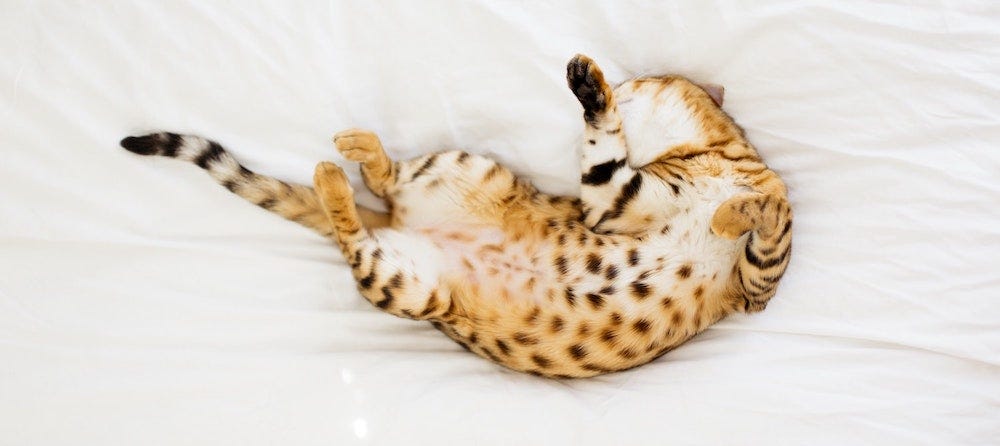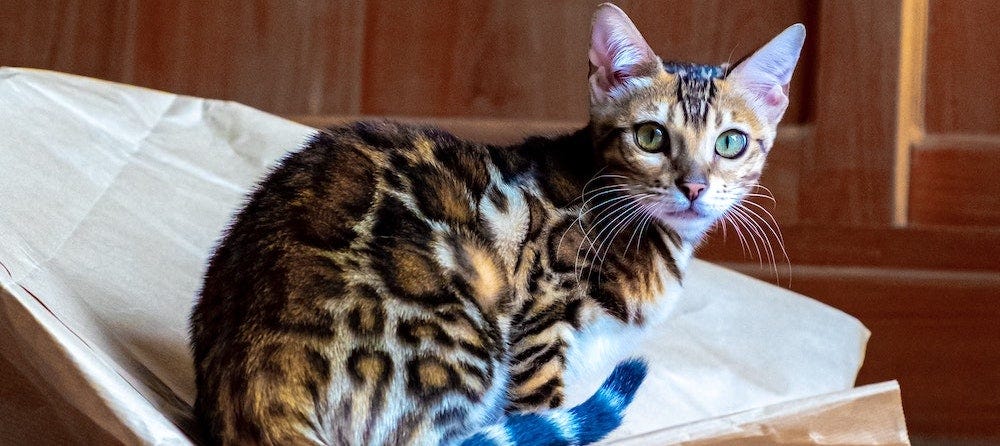Ah, the Bengal—a regal yet wild-looking cat that attracts attention with their miniature leopard appearance. The Bengal’s coat is their most prominent feature, helping them stand out among other cat breeds. While they look like they belong out in the wild, hunting for food and fending off threats, these cats are as domesticated as they come.
The Bengal cat is known for their friendly, outgoing attitudes and devotion to their people. So even though they look feral, the Bengal cat is anything but.
When looking at a Bengal, you can’t help but notice their intense markings and coloring. Each Bengal you see can be differentiated through their coat, yet not all colors are recognized by TICA. There are only three officially recognized colors, but that doesn’t stop other color variations from popping up. Nor does it stop us from loving these colors and how oh-so-cute they are.
If you’re interested in finding out where your Bengal cat fits on the color and pattern scale, keep reading.
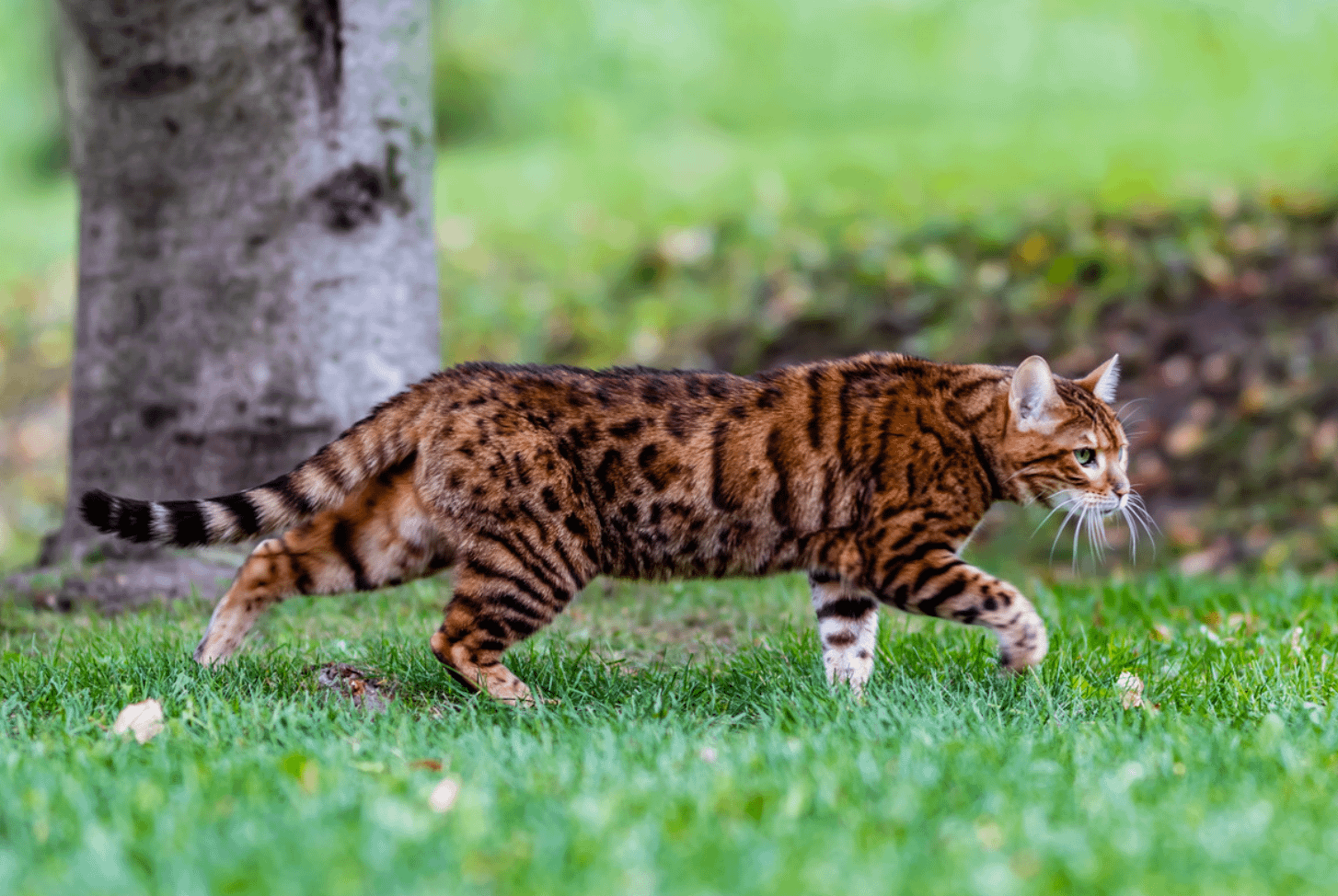
History of the Bengal cat
Many believe that the Bengal cat must come directly from a wild cat, but that’s not the case. Any Bengal cat that is available as a domesticated pet must be four generations removed from the Asian leopard cat. This was discovered after a woman named Jean Mill adopted an Asian leopard cat from a pet store (back when it was still legal).
Jean knew her pet was becoming lonely and introduced a domesticated black cat to the Asian leopard cat. She didn’t think they’d be able to breed, but alas, they did.
When this litter was born, they were extremely adorable but still behaved like wild animals. They didn’t want to cuddle, they didn’t adapt as easily as domesticated pets, and their temperament was overall hard to anticipate.
Bengals you know and love today are completely opposite of this first litter. Today’s Bengals are playful and friendly, giving much time and devotion to their family.
Nowadays, caring for a Bengal means you get a great pet that will wow everyone they meet with their charming characteristics—instead of having a wild animal on the loose.
What does a Bengal cat look like?
The Bengal is a very muscular and athletic cat that ranges from medium- to large-sized. They are highly active and stay in good shape based on their interests. Keeping a Bengal healthy isn’t usually challenging because they’re always moving (including at 3 a.m.).
They have oval eyes that are alert and wide, with angular faces, long bodies, and pointed ears that always seem to be listening. Without their distinguished coats, they are very similar to other domestic cat breeds in terms of health and behavioral traits.
The Bengals’ coats help them stand out. Their coats are short-haired, thick, dense, and very soft to the touch. They also resemble a leopard’s pattern. Their coats come in three different patterns plus three recognized colors, though other colors exist and occur.
What colors do Bengal cats come in?
There are a variety of colors that your Bengal cat can come in, but some might not be recognized by TICA. Regardless of how your Bengal looks, you know deep down that they are just like other recognized colors, and there are hardly any differences.
The colors that can occur on a Bengal are commonly found among other domesticated cat breeds. Still, there is just something about their patterning that makes these cats so exotic and ethereal. These pattern and color combinations are unlike other breeds of cats, which only adds to the appeal of the Bengal.
What are the recognized colors for Bengals?
TICA only recognizes Bengal cats that are brown, silver, or snow as being purebred. These colors are the most common to occur in the breed. Along with their coloring, the Bengal cat will have markings and rosettes very similar to that of wild cats.
When you see a Bengal cat with one of the following colors, they can easily resemble a miniature leopard or snow leopard, but don’t be fooled!

Brown
Brown Bengal cats might be considered the most common of all Bengal cat colors. This is often portrayed as a textbook Bengal cat, so you’re likely familiar with this appearance. The color range is quite vast, with some cats appearing more reddish or even in shades of honey and caramel.
A base coat of a brown Bengal cat will be lighter than the dark contrasts of their markings and carry many different shades. Their tails are usually solid black-tipped, and they have bright green or golden-colored eyes. This is the coloring of a Bengal most closely connected to the leopard, as it is very similar to their wild ancestors.

Grey / Silver
The silver Bengal cat is unique because of their pure white, almost steel-like base coat, contrasted against their black and grey markings. If there was a cat to glimmer, it would be the silver Bengal. This glimmer is reported to be even more noticeable in sunlight—maybe it’s their coat, or maybe it's their sparkling personality.
The silver Bengal will not have brown or golden tints in their coats but might have charcoal and blue shading. Silver Bengals usually have golden or green eyes and are majestic by nature.
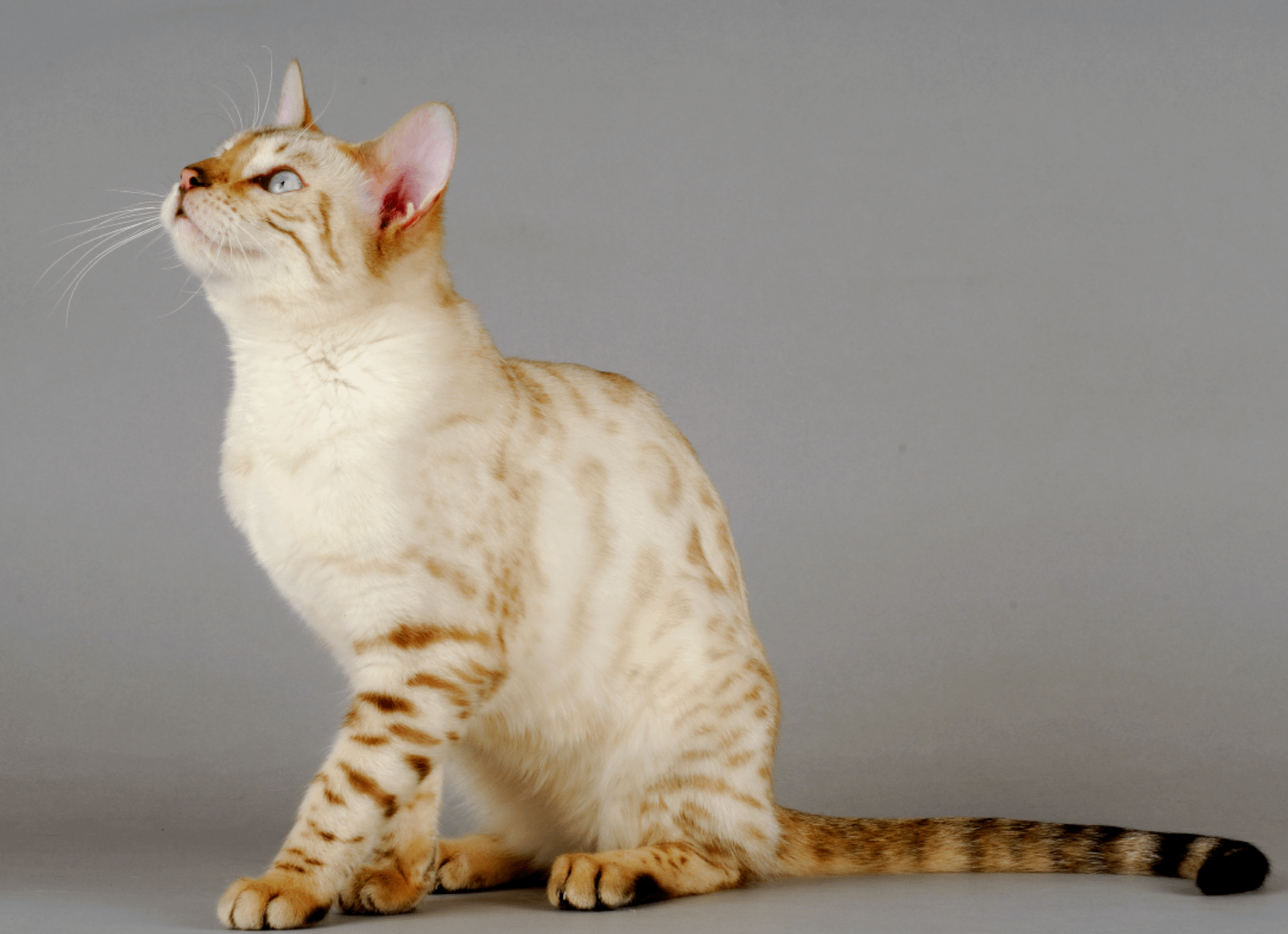
Snow
Despite the name, the snow Bengal is not pure white in their base coat like the silver Bengal. Instead, they come in three variations of colors: seal lynx point, seal mink, and seal sepia.
- Seal lynx point: When a seal lynx point snow Bengal kitten is born, they will be very light and have few visible markings. They have ice-blue eyes and resemble the wild Snow leopard. Their coats will darken as they grow, and the creamy-white base coat will have either brown, grey, tan, or marbled markings.
- Seal mink: These kittens are born with a light brown or cream-colored base coat and brown or caramel markings. Seal mink snow Bengals have aqua or blue-green eyes that are visually striking.
- Seal sepia: The seal sepia snow Bengal kitten is usually the darkest of the three variations, with a tan or brown base coat and darker shades of brown and caramel markings.
What are the unrecognized colors for Bengals? - Rare Bengal Cat Colors
Just because TICA doesn’t recognize the following colors in their breed requirements doesn’t mean that your Bengal isn’t a Bengal! Any unrecognized colored Bengal you come across is just as special in our books and behaves just like any other Bengal.
Charcoal
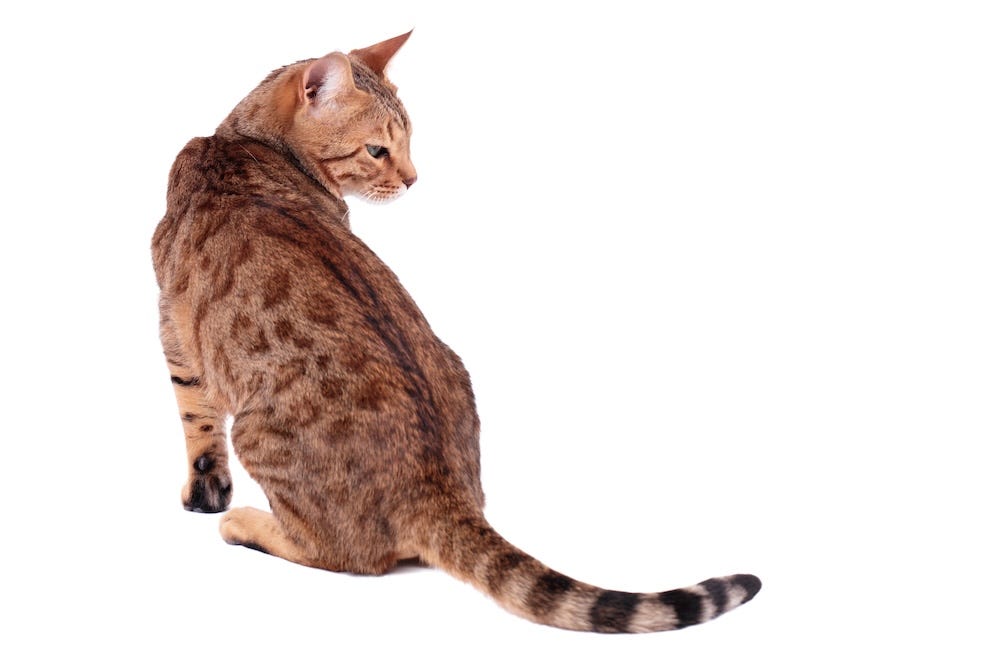
The charcoal-colored Bengal is less of a base coat and more so a layer over the top of a Bengal’s coat. The charcoal color can arise in any variation of coloring, including all three recognized colors. It might be referred to as charcoal brown or charcoal snow and is called a “ghost” layer.
Cats with the charcoal layer will often have very dark face masks and a dark stripe that goes all the way down the length of their back.
Blue / Lilac
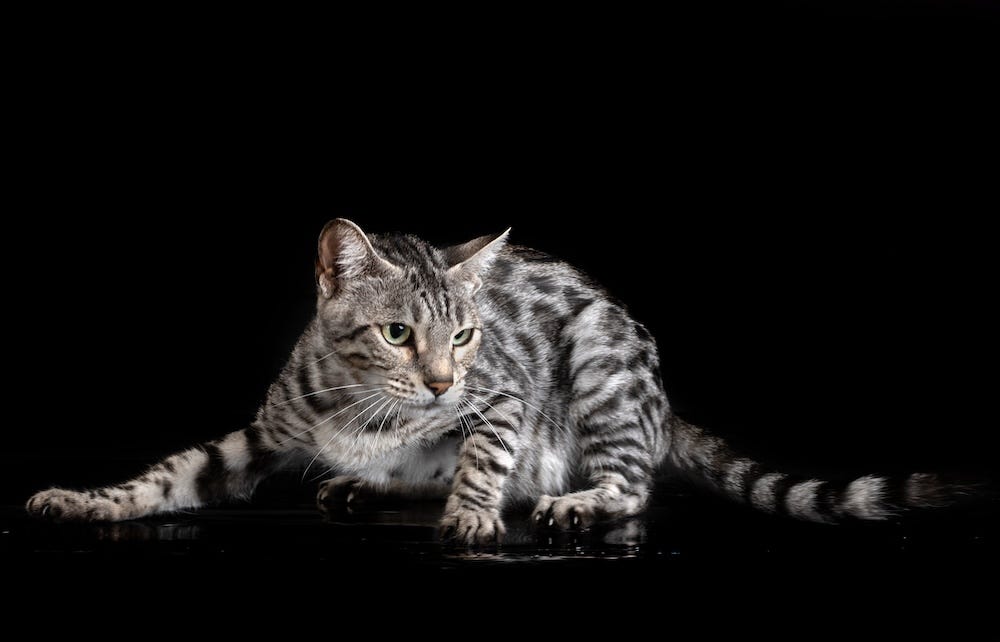
A blue Bengal is the rarest cat color and the most unusual coloring for this cat breed. If you ever come across a blue Bengal, no one will judge you for taking as many pictures as possible.
The blue Bengal will have a steel-blue or powdery-blue base coat with cream tones. These cats will have dark grey markings and hazel or green eyes.
Melanistic (Black)

These cats resemble little black panthers minus their marbled and spotted basecoat. When not in direct sunlight, this cat looks almost all black. As soon as the sun hits, though, it’s absolutely magical. All of a sudden, the marbled markings are visible and intriguing to the eye.
Similar to the charcoal Bengal, the markings of a melanistic Bengal are referred to as “ghost markings.”
What patterns do Bengal cats have?
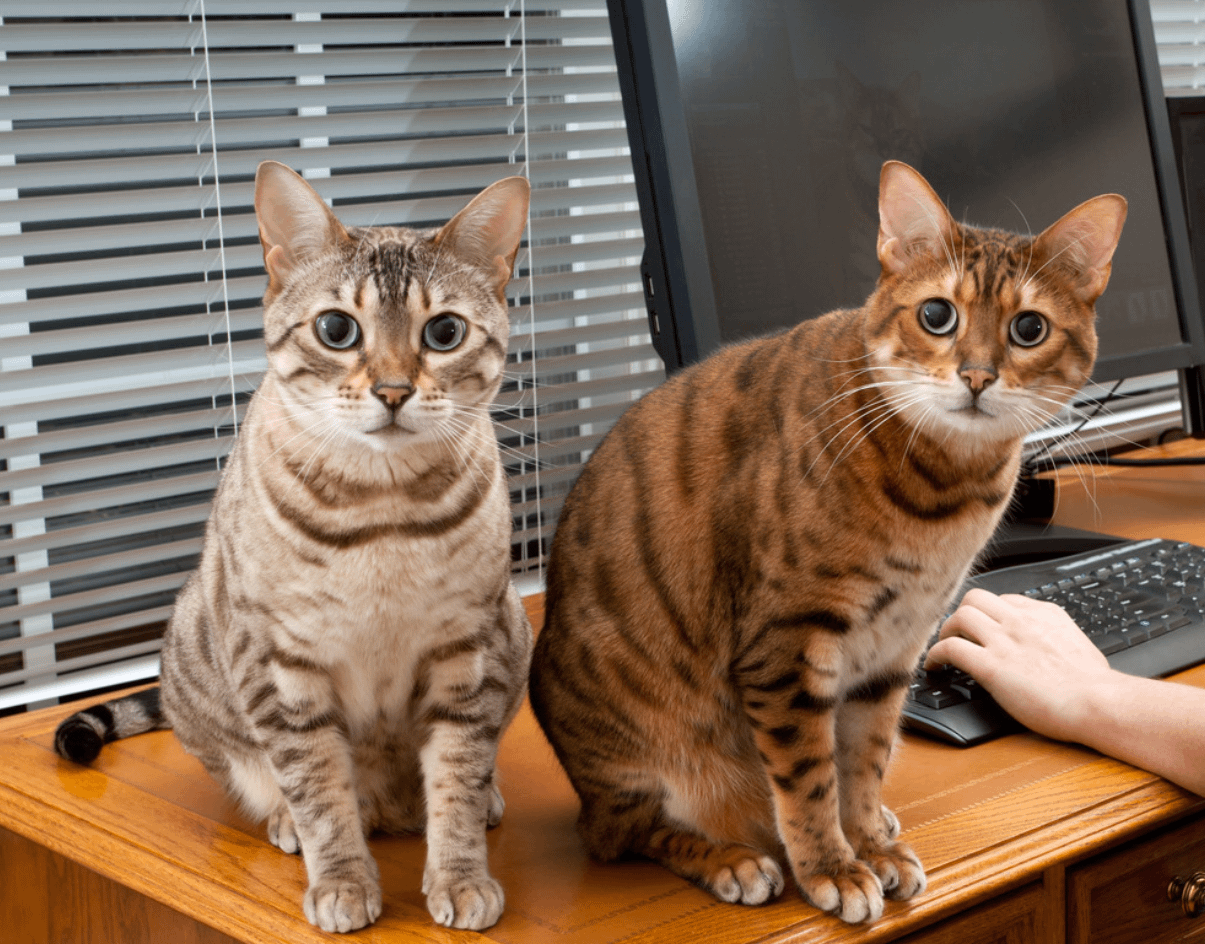
On top of the variety of colors that Bengal cats can come in, they have three different tabby patterns: spotted, marbled, and sparbled.
Spotted
Spotted Bengals are the easiest to recognize because they closely resemble the pattern of a leopard. Spotted Bengals have different shading variations, but the spots will likely be much darker than the base coat of the cat.
Marbled
Marbled Bengals have swirls and stripes that are entirely random; no two marbled Bengals will look the same. The marbled patterns will consist of two or more colors.
Sparbled
The sparbled marking is a very unique pattern because it’s the direct intersection of the spotted and marbled patterns. It’s easy to spot because it looks so unusual, but you might not notice the marbled patterns within the rosette markings.
Caring for Bengal cats
Your Bengal cat’s coat is their most prized possession. Although not considered hypoallergenic, they need to be kept nice and clean. By grooming them regularly, providing a clean place to use the bathroom with a self-cleaning litter box, and giving them baths when necessary (Bengals love water!), their coat will stay in top condition.
Your Bengal relies on you to help them stay happy and healthy, and it’s the least you can do for this beautiful feline!
Sources:
